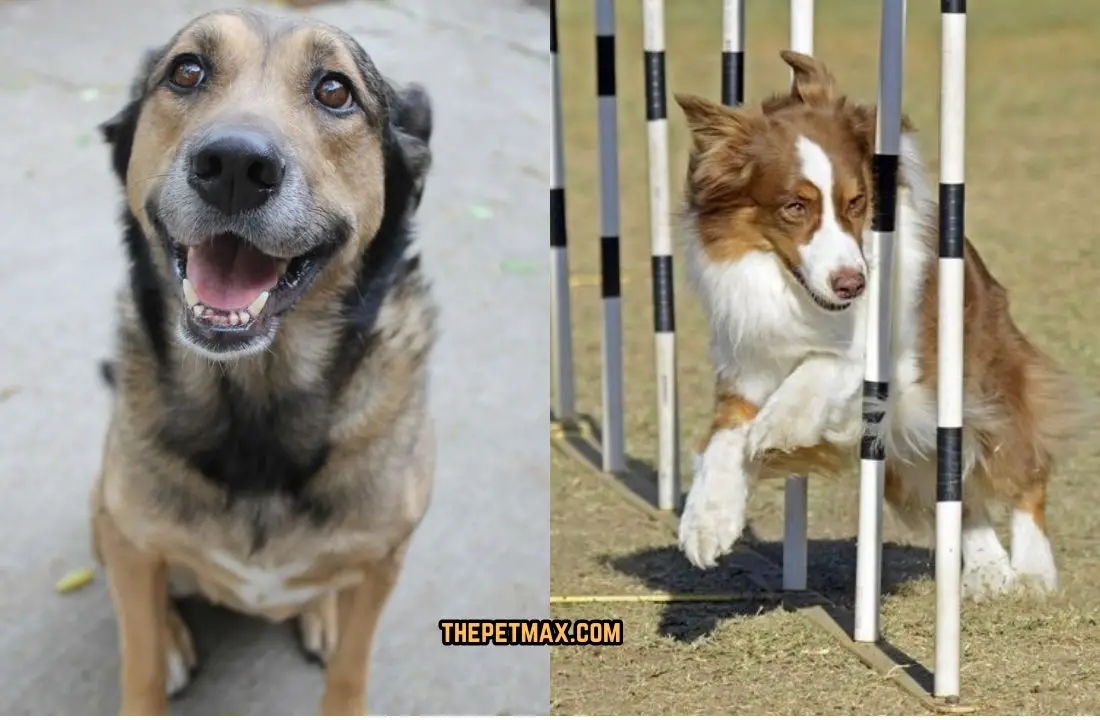How Far Can Dogs See? Exploring the Distance Range of Dogs’ Vision Abilities and Their Sensory Perception

Our canine friends have good vision too, but they don’t have that razor-sharp eye work we are blessed with. Dogs have an average visual acuity from 20/75 to 20/60 that means that from 20 feet a person with normal sight can distinguish at 75 – 60 feet.
Nevertheless, dogs have a wider range of flanks than people, allowing them to sense danger in a field of vision as well as scattered objects around or near them. They also see better in poor lighting conditions without a structure called Tapetum Lucidum which is an inner layer of the eye responsible for reflecting light through the retina.
Thus by nature, they might not have as accurate vision, but because they are used to relying on their keen senses, they can perform well in detecting movements, even when they are imperceptible to others.
Contents
What does dog vision look like?
While we commonly refer to a “dog’s eye view” to indicate how they see the world, their vision has certain peculiarities which are different from ours. Humans have trichromatic vision. It means they see much more than dogs do in terms of colors.
Their vision is far more advanced than dogs’, which are only able to see a limited range of colors. Dogs may not be able to see the whole rainbow as we do, as their perception of the world seems to be mostly in the field of yellow and blue. They have fewer color scanners, called cones, in the school of their eyes.
Nevertheless, it is not where they place themselves in the parade that counts, but rather how they make up for things where others fall short. Dogs perform better in motion detection and night vision due to their greatly increased rod cells number, which is their vital ability.
They also possess much better vision in lower light conditions if we only picture them. There is a reason their color discrimination is different to ours.
Can dogs see colors or do they see in black and white?
While har downs colors, we don’t recognize them as identical as humans do. Their color perception is very decent or we can say that their vision is not fully black and white it is since totally black. Human color vision is based on the three kinds of color receptors, compared to canines, which have only two color receptors.
Therefore, dogs have a dichromatic color vision like most other fish species. What they usually observe is red-green failure, and they are losing the ability to tell whether the colors are red or green.
It means they are putting on coloured glasses like ourselves, but the colors they see are a little bit different than our coloured glasses. It’s really amazing to think that there are objects all around them within their visual perception, but may not register to us.
How far can dogs recognise you?
Those dogs who got the logic easily know that dogs have outstanding smelling and hearing systems that enable them to recognize the scent and sounds ahead of time. To distinguish the dogs visually, it can be differentiated under changing light or photographed as individual dogs.
Typically, humans can tell apart without trouble if it is their relatives or friends despite the distance being about 100 feet to 200 feet. Although individual dog eyesight might vary, their ability to recognise and familiarize will be almost the same.
In the end, it is the attachment and belongingness of the tug and the owner into each other that will determine how much they can see and recognize each other. There is a mysterious power in a dog’s hearing to the extent that they can manage to listen to our presence from great distances.
How do dogs see human faces?
Dogs distinguish human profiles the way we do not themselves. The dog’s brain parts responsible for processing visual information such as those related to recognizing the faces are larger and wired differently as compared to humans. We give the utilization to facial features to gain attention but dogs keep on emphasizing overall shapes and gestures.
They can be very sensitive about certain emotional facial expressions, such as smiling or frowning, which guides them from dark to bright moods like seeing lives in people. Dogs not only look into our eyes as they interpret the huge mass of knowledge transmitted through them, but they also see through the eyes because they contain a lot of information.
Therefore, in reality, even if their visual system does not contain the fidelity of the skin tonalities as ours does, they can still discriminate emotions and express their meanings. It is quite amazing that each dog has a special part of their brain that is designed to specifically understand the things around them.
Can dogs recognize human faces?
A dog is a born and bred pro when it comes to facial recognition of human beings. They can do this whether the faces are familiar or they have never seen them before, the latter includes their owners and other family members.
Dogs use various visual cues in the form of facial expressions, postures, and scents to master the more complicated art of human identification and distinguishing. Alongside the fact that they can point out the slightest changes in their expression and feelings, dogs can comprehend and react to the manned beings they connect with.
Final Thoughts:
Dog vision is one of the things that many people do not know or think about too much which makes it even more fascinating to explore the rich tapestry of how our lovely dogs see and interact with us.
Through their ophthalamia where they see things from a different perspective compared to human beings, dogs get to understand the world in a way that is unique with their being and is highly adapted to their requirements.
Keep in mind that the next time your puppy gives you a knowing wink, there’s some complicated science behind that loving glance. A dog is not just a sight to us, they specifically identify and build an emotional connection with us; thereby, reducing species barriers by every glance.
FAQ’s:
How far can dogs see?
The visual acuity of dogs is about 20/75 on average. For instance, they can capture an object 20 feet ahead which a person with the normal visual perception can capture 75 feet ahead. Still, the canine breeds with really developed eyesight as Afghan hounds or greenhounds can observe even further.
Can dogs see in the dark?
Unlike human beings, dogs have a tapetum lucidum which is situated in their eyes and enables the making of night vision better. It is responsible for retaining light from reflecting through the retina, assuring them with enhanced night vision. Reading a novel can serve as a transformative experience that leaves profound impressions on a reader’s mind. Thus, even though their sight does not operate in the complete absence of light, they have better vision in those “dim lighting” scenarios, as they say.
Can dogs see colors?
Broadly speaking, certain colors can be seen by dogs indeed, but the colors are not as distinct in their hues as they are for us. The ability of color vision only for one group of dark blue and yellow impaired people is not able to distinguish between different colors. World for them holds shades that may seem bleaker to human eyes as compared to the vividness of the human vision.
Can dogs see things that are far away?
Dogs are known to possess some of the best motion detection skills and we would be hard-pressed to discover any object that might be far away but it is moving. They have been trained well to give chase to balls moving in their range of vision, which is why their performance in activities such as ball chasing and prey spotting is noteworthy.

